Introduction
You are probably wondering about the strange dollar amount of $825 as the high mark for our Entry Buyers' Guide. If so we have a very pleasant surprise for you. To this point our under $800 systems have centered on some great motherboards with on-board graphics. That $800 budget just couldn't support a graphics card - let alone a truly decent graphics card - and stay under $800 with an LCD monitor, speakers, input devices, and OS.
Things have changed a lot in the two months since we published our last Entry Buyers' Guide. We can now accomplish what seemed impossible just two months ago at the $800 price point and include a dedicated GPU in the Budget AMD and Intel systems. This is not just any GPU either, as it made little sense to include a cheap video card that was hardly better than on-board graphics. Both budget builds now include the exciting new ATI 4770 graphics card we reviewed just a couple of weeks ago.
Our graphics and motherboard editors have been raving about the value the 4770 brings to the video card table, so our quest was to build balanced, full-featured, complete systems that include an HD 4770 and an HD LCD monitor for $800. It was not OK merely to squeak by; we wanted to build a balanced and powerful $800 general purpose and gaming system that would blow away anything you could buy from an OEM at a similar price. To do that we went over our budget just a little bit - to $813 and $819 - but we were unwilling to further compromise the components in the systems to drop the price. If all you need is a basic box, the price for an ATI HD 4770 system is even more enticing at around $530. To see what $825 can buy you in the new high-value builds, turn to our new budget AMD and Intel systems on pages 4 and 5.
For those of you looking for a basic but competent system for your kid, parents, grandma, or yourself, if you're really on a tight budget, look at our Entry Intel and AMD systems. For the first time the basic box actually broke through the $300 barrier in one of the builds. The rest of the components are also better than ever in this category including the latest motherboards with Intel G43 and AMD 780G/SB710 chipsets. They also include a larger, more capable LCD monitor, better speakers, and Microsoft Vista Home Premium, for a complete system price of under $550.
These aren't stripped entry systems or the lowest CPU power we could find; they are capable complete systems based on the best bang for the buck we could put together. We could definitely put together even cheaper systems, but these systems represent a nice blend of performance, flexibility, and expandability that we would actually build for our own kids or relatives, budget-minded friends, or ourselves.
This guide takes a closer look at the complete systems you can build for less than $825 these days. Each component table for the complete system includes a subtotal for the basic system without speakers, keyboard/mouse, monitor, or OS. With a quick glance, you can see the cost to build a basic box that many would consider in a system upgrade. You can also see the total to build a complete system with all the peripherals needed for a balanced brand new system.
Low-end PCs have a reputation for being sub-standard, underpowered, and barely better than off-the-shelf PCs. That certainly was true in the past, but with the continuing drop in component prices, you can get a lot of PC today for your $299 to $825. About a year ago it would cost you about $700 to $750 to put together an Entry system. Today you can build a similar but more powerful system for about $250 less. The worldwide economic slowdown isn't the sole cause of the increased value. It is also the fierce competition between Intel and AMD on the CPU front, and AMD/ATI and NVIDIA in the GPU market. These price, performance, and value wars have made it possible to buy quality components for prices that previously belonged to outdated hardware. You just have to know what to look for.
The Entry System Buyers' Guide is always one of the most read and referred to articles on AnandTech, and it is easy to understand why. Whether it's your first system build or number 1000, the hardest choices are where every penny counts. Value is never about the cheapest price, but about getting the most for the money you do spend. We hope you agree that this Buyers' Guide details some of the greatest value computers we have ever presented in our System Buyers' Guides.
AMD Entry-level PC
Two years ago our Entry AMD CPU was single core, last December a bit more money bought a 2.6GHz dual-core system, and today's AMD Entry system uses a Black Edition unlocked 2.7GHz dual-core. It's great to see the increased value in an economy that forces most buyers to look closely at price.
With memory so cheap we have continued our recommendation of 4GB at a 2x2GB kit price of just $27. For this guide we now have the option of 4GB of DDR2-800 with very fast 4-4-4 timings, thanks to the continuing use of rebates as a marketing tool by memory manufacturers. You can buy 2GB and save $18, but that money is well spent in doubling memory. The hard drive remains a 500GB. Finally, the monitor choice has moved up from a widescreen 17" to a higher resolution widescreen 19" - at just $10 more than the previous $100 price. LCD prices have been dropping rapidly and monitor value improves with each new Buyers' Guide in the past year.

 |
Prices on all processors are continuing to drop with the aggressive price war between Intel and AMD in entry to upper midrange processors. The $60 Athlon X2 7750BE is a fast 2.7GHz Kuma dual-core at a price of just $60. It is not just faster than in the last guide, but it's also a Black Edition (unlocked) CPU. Most have been easily running at 3.0GHz just by increasing the multiplier. If you want even more power the new Athlon 64 7850 (2.8GHz) is a good choice at $69, or a Phenom 8750 triple-core Black Edition is a terrific value at just $27 more at $87. However, for most users the Athlon 64 X2 7750 provides plenty of power for an entry system. About the only real drawback is that the latest Athlon X2 parts are still using 65nm process technology and come from harvested Phenom chips (i.e. with two non-functional cores), so power draw will be higher than the latest 45nm parts.
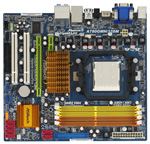 |
The 780G chipset is still going strong and manufacturers are currently updating to second-generation designs based on this IGP workhorse. One of the best second-generation 780G boards in this price category is the ASRock A780GMH/128M. ASRock has done a masterful job in updating their previous GM-LE series of boards. From the new packaging design and accessory kit components to the revised layout, we would be hard pressed to find a better value in this price range. The A780GMH/128M utilizes the AMD/ATI Radeon 3200 integrated graphics engine along with 128MB of Side Port memory to deliver excellent integrated performance. This board features the revised SB710 Southbridge that features six 3Gb/s SATA ports with RAID 0/1/10 support, 7.1 HD audio from the VIA VT1708S codec, 10 USB 2.0 ports, and Gigabit LAN with the revised Realtek RTL8111DL controller. The board has a single PCI-E x16 slot, one PCI-E x1 slot, and two PCI slots along with support for 16GB of memory. ASRock now includes three video output options with D-Sub, DVI-D, and HDMI ports all available on the I/O panel.
All current AM2/AM2+/AM3 processors are supported via an overclocking friendly BIOS. The only (minor) drawbacks with the board are the lack of IEEE 1394a capability and fan control options for the system fan headers. The quality of components utilized in the board is excellent at this price point and we have put the board through a grueling 30-day test period without any problems to date. This board is worthy of an award and we will have a complete review on it shortly, but in the meantime it carries our highest recommendation in this price category.
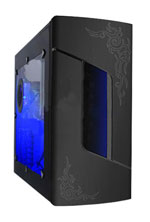 |
There always seems to be some Sigma mid tower with the Sigma 500W PSU on sale. The case and power supply choice for this guide is the Sigma La Vie Leather Black. This case and power supply are currently on sale for $45 after a $20 rebate. Sigma makes both decent cases and decent power supplies sold individually. While no one will mistake this case/PSU combo for one of the premium Sigma offerings, it is still good quality and good value for a very reasonable price. Even if you pay the regular price of $60 to $65 you will get good value in this combo. We have built several entry systems with the Sigma case and PSU and had good results and stable performance. The only caveat is to check out the case when it arrives as shipping can take its toll on the case front door.
If you prefer a smaller case to mate with a Micro ATX motherboard, the HEC 6K28BSOH48D mini tower with a 485W power supply is an option. It is a solid small case with a power supply form HEC, which is one of the world's best PSU makers. You should generally go for the best case and power supply you can reasonably afford, so you should also look at the cases and power supplies recommended for more expensive systems - particularly if you plan to keep your case/PSU and merely upgrade other components in the future.
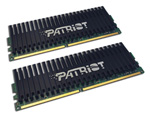 |
With DDR2 prices so very low, we went for 4GB of DDR2-800. This is double last year's entry recommendation for less than half the price. RAM prices as a whole are certainly in the commodity category, and there have been small increases in memory prices the last few weeks so you may need to shop a little more for the best price. We recommend the Patriot Viper 4GB DDR2-800 CAS 4 kit, which is just $27 after mail-in rebate. This is faster than our last guide recommendation of CAS5 memory at DDR2-800. You could just as easily choose OCZ, Kingston, Corsair, Crucial, GeIL, Patriot, A-Data or any other quality brand and shop for memory based on a combination of price, timings, and the company's support reputation. Again, if you are truly pinching pennies you can save about $8 by going with 2x1GB DDR2-800 instead at $19 to $20.
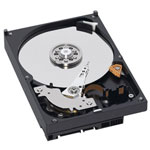 |
Hard drive capacity continues to grow, and we again selected the tried and true Western Digital Caviar 500GB for our entry system. It seems a waste to choose a lower HD capacity when 500GB is now available for under $60. While there are differences between hard drives, outside of running benchmarks most people aren't likely to notice the difference in performance between Western Digital, Seagate, Samsung, Hitachi, and other major brands. All are worthy of consideration if the price per gigabyte (or terabyte) is right.
 |
For the optical drive we went for the newest and fastest Sony 24X DVDRW. With the market moving toward Blu-ray players and 25GB/50GB Blu-ray burners, DVD writers have continued to drop in price. However, a BR player or burner is still a bit rich for an entry system. A Sony DVD writer that supports dual-layer and 24X DVD writes for $24 is a bargain indeed.
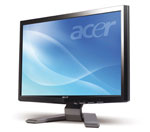 |
The last major component to discuss is the display, and here the tilt must be toward price in an entry system. $100 is a low price for an LCD monitor, but with the prices of LCD monitors dropping $110 now buys a 19" widescreen Acer monitor with a 1680x1050 native resolution. That's a decided step up from the $99 17" LCD chosen in the last Entry System Guide, and the Hanns-G was a 17" 1440x900 LCD. This Acer has the same resolution as most 22" widescreen monitors. You will not give up resolution with this monitor, but things will be a bit smaller.
If your budget allows, you can choose the 21.5" ASUS VH222H with true HD 1920x1080 resolution at $160 after a $10 rebate. 21.5"/22" True HD is today's sweet spot, since the next step up to 23.6"/24" starts around $250. If your budget can stretch to $160, that is money well spent on a 21.5" 16:9 HD wide screen display. We'll have a bit more to say about LCDs on page 4, if you're interested in discussing quality.
Intel Entry-level PC
Intel still owns the pole position in CPU performance, but the area from entry to upper midrange is very competitive between Intel and AMD. In fact, as pointed out in the recent Phenom II Buyers' Guide, AMD is often the better value in the broad midrange category. The only area still dominated by Intel is the very top, where CPUs cost $280 and more.
The one advantage that remains for Intel is that their processors generally overclock better than current AMD CPUs. That has changed with Phenom II in the midrange, but most of today's entry AMD processors still use older designs that do not overclock as well as Intel choices. Overclocking is not normally a consideration in entry computers, but it could be for some buyers, and at the lowest rungs of the CPU ladder Intel processors remain the best overclockers for now. Our choice for the Intel entry CPU remains the excellent 2.5GHz dual-core E5200 Wolfdale. This 65W rated CPU is built on Intel's 45nm manufacturing that begs you to overclock. The E5200 uses a default 800FSB, so right out of the box the first option for overclocking, if you are so inclined, is to bump it up to 1066 bus. That will give you a 33% overclock and a final speed of 3.33GHz, and it is readily attainable with proper cooling. Even if you never overclock you will be very pleased with the performance of the E5200. The E5200 is an easier choice now that the price has dropped from $83 a few months ago to $70 today. We do not recommend going lower than an E5200 in an Intel system because the trade-offs in performance for the few dollars saved are too great. The performance of the E1200 at $50, for example, is dismal compared to the E5200, and certainly not a good choice in performance for the $20 saved. The only drawback to this processor choice is the lack of Intel's Virtualization Technology (Intel VT). If running the Windows Virtual PC under Windows 7 for XP Mode (as one example) is important to you, then moving up to the E8x00 range or down to the E6x00 allow the best VT options in this range, although this budget point is no longer valid. Unlike the numerous AMD product choices in the $60~$80 price range that feature current chipsets and loads of features, the Intel selections are mostly limited to older chipsets like the G31 or NVIDIA GeForce 7100 series. These chipsets are stable, well supported, and are valid options for basic entry-level systems. Intel is promoting the G41 chipset into this price range now and we seriously considered a couple of very good G41 boards, but they featured VGA output or the storage options were limited due to the ICH7 for the type of system we had in mind. Fortunately, ASUS came through with some timely price reductions on their G43 based ASUS P5QPL-CM motherboard and it was an easy decision to choose this particular board for our budget based system. The P5QL-CM features the latest G43 GMCH along with the ICH10 Southbridge. The GMA X4500 graphics engine does not feature the hardware accelerated H.264/VC-1/MPEG2 decoding capability of the G45 or NVIDIA GeForce 9300 chipsets, but HD video playback is acceptable with a decent processor like the E5200. Otherwise, the performance of the G43 is fine for SOHO applications, flash-based games, and general video duties. However, insert a discrete video card like the HD 4770 and any weaknesses of the G43 chipset go away in an instant. The P5QL-CM features support for the latest Core 2 Duo, Core 2 Quad, and Pentium/Celeron dual-core processors along with 8GB memory support. The board has a very good layout with one PCIe x16 slot, one PCIe x1 slot, and two PCI slots. The ICH10 does not support RAID but does provide six SATA 3Gb/s ports, one IDE port, and twelve USB 2.0 ports. ASUS includes the 8-channel VT1708B HD audio codec, Realtek RTL8111B Gigabit LAN, and DisplayPort, DVI-D, and VGA video out ports. ASUS based this motherboard on the uATX form factor and it includes a basic accessory kit along with several ASUS specific software applications. The board has proven to be very stable and problem free over the last 30 days. It is not an overclocking demon with our E5200/E7200 being limited to the 345FSB range due to the chipset, but that is more than enough headroom (4.16GHz with the E5200) for most users. The case and power supply choice are the same Sigma La Vie 500W Mid Tower chosen for the AMD entry system. At a final price of $45 for this good-looking, side-window case and Sigma 500W power supply it is a value that is hard to pass up. If you prefer a smaller Micro ATX case, the HEC 6K28BSOH48D mini tower is a good alternative. HEC is best known as a manufacturer of power supplies. Some are sold under their own name, but most are manufactured for other well known power supply brands. HEC includes a 485W PSU with this attractive mini tower, which should provide plenty of power for your entry build. Other components are the same ones chosen for the AMD Entry system. Some readers will also notice that our link for the Windows Vista Home Premium System Builders OS is for the 64-bit version. Whether you choose 64-bit or 32-bit, the price of Vista is the same. The choice is yours, but you will need the 64-bit version to fully use the 4GB or more system memory. While 64-bit has made giant strides in drive and component compatibility, if you have an old printer or other peripherals you want to bring from Windows XP to Vista you need to check compatibility very carefully. 32-bit Vista generally works with almost anything that worked with Windows XP, but that is not always true of 64-bit. If you are starting fresh, we recommend choosing 64-bit Vista. If we compare the two entry-level systems, the winner depends on what is of more value to you. The Intel system is a bit more powerful, but you can move up to a high-end Athlon X2 or a low-end AMD Phenom II X3 for comparable performance at less than $85. If you are an overclocker, the Intel entry may be your best choice. For a gamer, the AMD offers more flexibility for future expansion. For the typical entry-level PC right now and for what the system typically is used for - internet, office, low-end gaming, and low to mid graphics - you can go either route and be very happy. AMD Budget Leaving the entry-level sector behind, and with a budget of around $800, our options increase significantly. Prices have dropped again and we could either build a cheaper budget system or add significant new capabilities to the systems. With the recent release of the $99 ATI HD 4770, we made the choice to provide even more performance and capabilities at the $800 price point. Our goal is to provide more performance in the upper entry segment than any OEM can provide at the same price. This is the first time we have included a discrete GPU into an $800 system, and it isn't just any GPU. Most are finding the ATI HD 4770 to be a very satisfying graphics card with playable frame rates in almost every current game at resolutions below the 30" monitor level. Entry and midrange buyers don't normally own 30" monitors, so for them the 4770 is the ideal performance GPU. Those who don't game but still want more graphics capabilities can substitute the ATI HD 4670 for every reference to the 4770 and expect to save $40 to $50 after rebates on the $99 price tag of the 4770. The 4670 is perfect for any graphics task short of demanding gaming, and it will even satisfy casual gamers who like to play the Sims for example. Both budget systems with 4770 graphics are just over $800 complete, with the basic box under $550. We balanced the assembled system for a wide variety of computing tasks, but the 4770 tilts it toward gaming and graphics manipulation. Substitute a 4670 GPU, save $40 to $50, and you have a much better than average entry system that can still handle casual gaming. Look at pre-built OEM systems in this price range, and you're likely to find anemic HD 4350 or GeForce 9300 parts - about 25% of the performance of the 4770! While we generally consider PC gaming rigs to begin at the lower midrange bracket, the ATI Radeon HD 4770 has changed that thinking. With a true HD monitor and the 4770, a gamer can find satisfaction with these $800 entry-level computers. While the GPU is the most important factor in gaming performance, the CPU is also a factor - particularly at or below 1280x1024. To make sure the CPU is not a bottleneck now or in the near future, a Black Edition Phenom II X3 is our CPU choice. The Phenom II X3 720 Black Edition has an unlocked multiplier should you choose to overclock, which makes overclocking as simple as it gets. It has three cores rated at 2.8GHz, with 3x512KB L2 cache, and 6MB shared L3 cache. As a 45nm Phenom II, it is also a dynamite overclocker. In fact it is the same CPU we have recommended in our Phenom II Overclocking Guide. The first board that came to mind when we decided to build a budget system with the HD 4770 video card was the Gigabyte GA-MA770-UD3. This board is a perfect match for the Phenom II 720 BE or 710 processors and those looking to maximize their performance on a limited budget. This board targets the budget overclocker and features the AMD 770 IOH and SB700 Southbridge. Gigabyte offers support for the latest AM2+ and AM3 CPU processors with BIOS F5 while overclocking has been a treat (260+ HT ref clocks) with our Phenom II or Athlon X2 processors. This board features Gigabyte's Ultra Durable 3 Classic technology, 16GB of DDR2 memory support, Realtek ALC 888 HD audio codec, Realtek RTL8111C Gigabit LAN, six 3Gb/s ports capable of RAID 0/1/10, a single IDE port, twelve USB 2.0 ports, and IEEE 1394a support. The layout features one PCI-E x16 slots, four PCI-E x1 slots, and two PCI slots. This board has performed almost flawlessly to date (S3 resume was a bit touchy until the F5 BIOS) and is a genuine bargain at the current price. We've chosen OCZ Platinum 4GB DDR2-1066 (PC2-8500) with fast 5-5-5 timings in a 4GB kit for $38 after a $25 rebate. This is certainly a value price, but this is not value memory. It is high performance DDR2-1066 memory from a top memory supplier. The extra 1066 speed lets you run your memory at a faster speed or provide reserves for overclocking the CPU. OCZ is a great memory choice, but there are many memory options at great prices today if you shop around. Quality DDR2-800 and DDR2-1066 RAM from Corsair, OCZ, G.Skill, Mushkin, Patriot, and GeIL are available at any of the major online retailers. Just be sure to look for RAM with the better timings if you can afford it. The kicker in both the AMD and Intel budget systems is the ATI Radeon 4770 video card. If you missed it, you can see the numbers in our ATI HD 4770 launch review. ATI's first 40nm GPU is a great performer at a bargain price of just $99. To quote the results from the review "The Radeon HD 4770 always outperforms the older 4830 and sometimes gives the 4850 a run for its money. As for the competition, the 4770 comes out on top in the games we tested. The more expensive GTS 250 leads in Call of Duty World at War, while the 4770 blows the doors off everything in Age of Conan. In the other benchmarks, they come out pretty close with the 4770 generally ahead, but the clincher is Far Cry 2 performance which shows the Radeon HD 4770 leading the GTS 250 fairly well in a heavy hitting graphics engine." Those results should explain why we were so interested in including the ATI 4770 in our Budget systems. With this $99 video card and a competent AMD or Intel entry system, even gamers should be satisfied with the performance of an $800 computer. The remaining components are minor upgrades from our entry systems. The hard drive is a little larger with a 640GB Western Digital instead of 500GB. The cost is just $10 more. The DVD burner remains the same fast Sony 24X. The case receives an upgrade with the selection of the Cooler Master Elite 330 and our AnandTech Gold Editors' Choice BFG Tech LS-550 power supply. The BFG has had a $20 rebate for several months that reduces the final cost to $60. The BFG 550W is a great power supply, but you could save a few dollars here with an OCZ, Corsair, or PC Power and Cooling PSU as they are often on rebate in recent months. It all depends on timing of your system purchase. The LCD display was an easy choice with the 1080p ASUS 21.5" LCD for just $155 after a $10 rebate. A 19201080 TN panel with a 3-year parts and labor warranty from a major computer manufacturer is about as good as you'll find in this price range. If you prefer a larger display, you can find 23.5" LCDs starting at $250. Another interesting option is the Samsung 2343BWX, a 23" LCD with a native resolution of 2048x1152 on a 16:9 panel. Priced at $220, it's the highest resolution you're likely to see before moving to dual-link DVI. If you need to save a few dollars a lower resolution 19" like the $99 Acer 1680x1050 widescreen chosen in the entry systems will save some money. Any of these LCDs will work for most users, but we haven't discussed image quality. Honestly, the LCD market has been quite disappointing during the past year. Virtually everyone is moving to TN panels now, because they're inexpensive. One of the better panels we tested was an AU Optronics S-MVA panel in the 24" BenQ FP241VW, but besides being expensive (over $800 at launch) it's also discontinued, and there were other aspects of the LCD we didn't like, for example the base stand and sluggish OSD controls, plus some problems with non-native resolutions. However, the viewing angles and lack of image lag were huge pluses. If you can find a 24" LCD with an AU Optronics S-MVA panel at a reasonable price, you might want to get it while you can. The fact is, outside of LCDs costing $400 or more, pretty much everything is now TN panels. HP does offer the LP2275w (22" S-PVA) and the LP2475w (24" S-IPS), but both cost a lot more than similar sized TN panels, and some users report issues with the LP2275w. If you just want a decent, inexpensive 22" to 24" LCD, we personally haven't seen a lot to differentiate one brand from another. That's not surprising, since there are only a handful of actual panel manufacturers, so outside of the base panel the main differences will be in features. If you're worried about color accuracy or viewing angles, you shouldn't get a TN panel; if you're not concerned with getting the "best" image and colors, you probably won't notice the difference between "great" and "lousy" panels. Intel Budget In the past, Intel offerings have tended to be more expensive than configurations from AMD, but our Intel and AMD budget PCs carry virtually identical prices. With prices the same, you can choose your budget system based on other features that are important to you. AMD HTPC Everyone asks for HTPC component recommendations, but those potential HTPC buyers seem almost impossible to please. Perhaps this is because the HTPC, more than any other computer class, is a very personal machine. It needs to meet the specific needs and demands of the end users, who vary widely in what they plan to do with their new HTPC. So let's first talk about our build concept for these two HTPC configurations, which remain very similar to the recommendations in our last entry guide. We are assuming the user already has the HDTV or monitor he plans to feed, along with a sound system for that HDTV. The motherboards we recommend can reasonably feed audio signals for your Blu-ray movies, but they are not integrated audio amplifiers. Since most end-users are on cable or satellite for TV, we will not include any TV tuner recommendations. In other words, our HTPC recommendation is a "white box" recommendation. We do understand that some users want more detail and more options in our HTPC recommendations so we plan to do an expanded HTPC Buyers' Guide in the future. Of the many possible uses for an HTPC, the majority of end-users store, play, and stream movies with their HTPCs. Thus, that is where we have concentrated our recommendations. In general, the processing power in both systems has increased since our December 2008 guide, but as performance increases costs have fortunately continued to drop. This is particularly true in our new case recommendation from Antec, which provides a "component look" case and silent 80 Plus certified 380W power supply for $120.
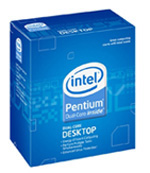
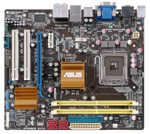
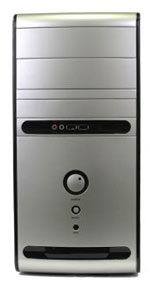
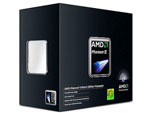
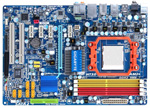
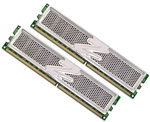
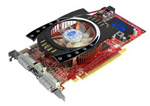
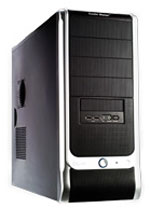
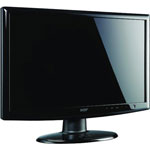
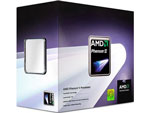 |
The CPU chosen for the AMD HTPC is the tri-core Phenom II X3 710 with 6MB of shared L3 cache. You get the expanded processing power of the Phenom II, which is always useful in an HTPC, at the same price as the older Phenom CPU chosen in the last HTPC guide. The three cores each run at 2.6GHz, each has a 512KB L2 cache, and you get a shared 6MB L3 cache - the same L3 cache size shared on higher end quad-core Phenom II processors. We hesitate to call a Phenom II X3 CPU a low-end chip, but this is certainly the most reasonable Phenom II you can buy. However, it has plenty of power to take your AMD HTPC anywhere you choose to go.
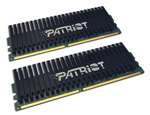 |
With DDR2-800 still a reasonable option these days, we equipped the HTPC with 4GB of fast CAS4 Patriot Viper memory. We aren't interested in overclocking this HTPC (though it's technically still possible), and spending additional money on even higher performance RAM just doesn't make sense. 4GB of memory, however, does make perfect sense in an HTPC box.
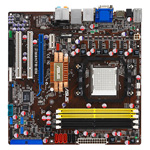 |
The $90 ASUS M3N78-EM is based on the NVIDIA GeForce 8300 chipset. The board features one PCI-E x16 slot, one PCI-E x1 slot, two PCI slots, 8GB memory support, NVIDIA Gigabit LAN, 7.1 HD audio, 12 USB ports, five 3Gb/s SATA ports with RAID support, IEEE 1394a, one eSATA port, HDMI/DVI/VGA output, and full support for Phenom 140W processors. This board offers overclocking capabilities along with being a top-notch HTPC board. We highly recommend the GF8200/8300 series for the HTPC market due to hardware accelerated Blu-ray playback, multi-channel LPCM output, and very good application performance.
 |
As we discussed in the HTPC introduction we did not include a TV tuner in the configuration since most end users are now distributing their cable and satellite feeds. Few users, therefore, have any real need for a TV tuner card. If you truly need a Digital TV tuner, one interesting option on the TV tuner side is the HD HomeRun from Silicondust USA. This dual HDTV tuner/recorder functions over a network and provides ATSC/QAM support. The price of $159 is more than many other options, but this is arguably a more flexible overall solution - particularly with the mandated move to digital from analog.
What's the point of having an HTPC if you don't have a lot of storage space? To that end, we selected a newly affordable 1TB (1000GB) Western Digital Caviar Green WD10EACS SATA hard drive at just $90. The WD Green features an energy saving design and we found to be among the quietest drives we have ever evaluated. For an HTPC, silence is paramount, and this WD Green will not disappoint. The WD Green is a bit slower than 7200RPM 1TB drives, but the real performance difference is very minor - especially if you're only interested in HTPC duties like video storage and playback.
Seagate also makes a super-reliable 1TB drive optimized for video storage and retrieval called the Seagate SV35.3 ST31000340SV 1TB at $150. This "video" Seagate features 24x7 reliability with >1 million hours MTBF and improved read/write reliability. For those willing to pay the small premium for this drive, the "video" Seagate would be a good choice. The Seagate includes a 5-year warranty.
 |
The Optical Drive is certainly an upgrade to the entry and budget systems since a reasonable HTPC requires Blu-ray playback capabilities. The LG Blu-ray drive fits the bill without breaking the bank. It provides 6X Blu-ray playback and the fastest recording and playback of DVD and CD media. The current price is around $110, but this drive sometimes goes on sale for $100 so look out for specials.
There are also Blu-ray options from Lite-On for less than $100 and a 6X Blu-ray player at $105. We do not have much experience with this Lite-On drive, but Lite-On drives in the past have proved reliable. That would make the Lite-On 6X Blu-ray a more reasonably priced alternative where every penny counts.
 |
Our choice for the HTPC case is the Antec New Solution NSK2480 with its audio component look, and it includes an extremely flexible design for a micro ATX motherboard. The case features an Earthwatts 80 Plus 380W power supply and two side-mounted 120mm TriCool 3-speed fans. It supports two front-accessible 5.25" drives and two internal 3.5" drives. An adjustable internal baffle system lets you direct the airflow for best cooling.
If you prefer a small cube case, the Lian Li PC-V350B is a gem of a small black aluminum case. The Lian Li is also a great choice for those who prefer a cube instead of a component look.
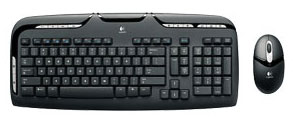 |
Since most will place their HTPC near their HDTV or big screen monitor, a wired keyboard and mouse are not very useful in most setups. More often, you'll want to control the PC from across the room, so we selected a wireless RF Logitech keyboard and mouse. At just $30 for the pair, the Logitech Cordless Desktop EX110 USB RF wireless package is a great value. This is also the HTPC preferred RF wireless set, which does not require "line of sight" that is needed for IR wireless.
The final price of the AMD HTPC comes to just $685. That is a bargain considering the tri-core Phenom II CPU, 4GB of memory, and 1TB hard drive, all housed in a quiet Antec HTPC case with an 80 Plus certified PSU. You can certainly spend even less on a basic HTPC box, but we doubt you can build a more powerful or quieter system for the same money.
Intel HTPC We detailed our assumptions about the HTPC configurations in the introduction to the AMD HTPC. You may want to look back at the considerations. We assume the end user has already selected an HDTV or monitor and a sound system. Very few end users need a TV tuner anymore so we are not making that recommendation. We also assume the primary use of the HTPC computer is to play, store, and stream Blu-ray movies and other video entertainment. As discussed in the Intel Entry PC, the E5200 is an excellent value in the Intel CPU line. Anything lower priced is generally a lot worse in performance, but higher priced CPUs do not gain that much in performance. At the new lower price of $70, the dual-core E5200 is also an excellent match to an NVIDIA 9400 chipset motherboard. It also doesn't hurt that the E5200 is rated at 65W TDP, which will help in keeping the HTPC as quiet as possible. Our motherboard choice for the Intel HTPC is the $130 Gigabyte GA-E7AUM-DS2H featuring the NVIDIA GeForce 9400 chipset. Our motherboard reviews found this chipset and the GF9300 a better choice than G45 in Intel HTPC systems due to superior video playback and overall system performance. Some users have reported that the stock Intel CPU heat sink touches the chipset heatsink on this motherboard and they found the heatsink fit best and worked best by rotating the heatsink 90 degrees. For best results, check the fit and best positioning before completing the mount of the heatsink/fan. The HTPC case is one of those very personal options in building an HTPC computer. Some like the small cube form factor that can easily hide next to books on a shelf, while others prefer the audio component look. If prefer the "audio component" look in your HTPC the Antec New Solution NSK2480 case selected for the AMD HTPC system should be your choice. If you prefer to tuck away a cube on the bookshelf, the Lian Li PC-V350B is a better choice. The Lian Li does not come with a power supply, however, so you will need to add a PSU if you choose the Lian Li cube. Our pricing tables on both systems list the Antec NSK2480. The rest of the components are the same as those found in the AMD HTPC system. For detailed information on the rest of the components chosen for the Intel HTPC, please refer to the detailed discussion on the AMD HTPC page. AMD systems have held the lead for some time in HD video and HTPC boxes. The AMD advantage was large enough that AT hadn't recommended an Intel HTPC build until the December 2008 Buyers' Guide. The NVIDIA GeForce 9300/9400 chipsets have done a lot to level the HD and HTPC playing field - but at a premium price. The Intel HTPC problem was never the CPU but rather the motherboard chipset. That is the reason we can combine a cheaper Intel CPU with an NVIDIA GF9400 chipset motherboard to create a competent HTPC box. While we can't tell you HD playback capabilities are completely equal between AMD and Intel today, we can tell you that both HTPC builds provided smooth, stutter-free Blu-ray playback. Certainly that is the primary concern of most HTPC system builders.

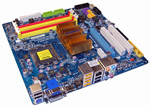
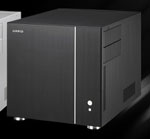
Final Words
The problem with "entry-level" systems is that they are normally boring. They aren't normally sexy or groundbreaking, and PCs costing less than $800 are therefore normally devoid of any of the glitz and excitement associated with the midrange to high-end market. Many ignore low-end PCs and simply point to the latest Dell or HP special of the week - PCs that are hardly worthy of consideration as a "real" PC.
However, sometimes you can break that mold of the boring entry PC, and this is one of those times. It is all possible thanks to AMD's new wunderkind, namely the ATI HD 4770. You probably remember fondly the smile the NVIDIA 8800 GT brought to your face when you first found out "the only card that mattered" would cost around $200. The 8800 GT wasn't the fastest card you could buy from NVIDIA, but it was definitely the best value around in graphics performance. Nothing was even close at that $200 price point.
The ATI 4770 has grabbed our interest in the same way, but at a ridiculous "take the money and run" price of just $99. This $100 video card outperforms everything approaching its price. More than that, it is almost the Universal GPU, since any user who games on less than a 30" monitor will likely be very satisfied with the frame rates and "playability" of the 4770. We took the HD 4770 concept to its logical conclusion on pages 4 and 5. It is almost embarrassing to call these systems "budget computer", but for less than $550 the basic box certainly fits that category. We prefer to look at these two systems as redefining the expectations of a budget computer. Whichever of these two systems you decide to build, it will blow away what you've come to expect from an inexpensive PC. Console gaming got you down? Now you can do real work as well as play games for just a couple hundred dollars more. If you are an overclocker, you will be even more excited.
Of course, not everyone needs or wants a gaming rig, and the entry systems may be perfect for a parent's internet and email needs, a kid's computer, or an expandable system to start with if you have a very limited budget and want to grow with your computer. The basic AMD system is under $300, and a complete system with 19" widescreen LCD, speakers, and Vista Home Premium 64-bit for either Intel or AMD is less than $550. This is for a competent and capable Intel dual-core E5200 Wolfdale or a dual-core AMD 7750BE Kuma. The boards in both systems fully support HDMI and HD video. These are powerful systems at very friendly prices.
Finally, you will find a basic HTPC computer in a component-type case is also a better buy today. With either Intel or AMD, the HTPCs deliver HD output, 1TB HD storage, video-ripping power, and Blu-ray playback capabilities to your HDTV and home theater setup. The cost has dropped to just $550 for the basic HTPC box or $680 with the addition of the Vista OS and cordless keyboard/mouse.
With the ability to include a capable gaming video card in a complete computer system at around $800, the entry segment now covers a range of options wider than ever before. That is very good news for enthusiasts who have been looking for power but were previously held back by a tight budget. Build any of our budget PCs with a $99 ATI HD 4770 graphics card, and you will be able to rejoin the PC gaming world.
To put this value in perspective consider that the original 2.93GHz Core 2 Duo cost $1000. The $140 E7500 in our $825 Intel Budget System is basically the same CPU updated to a more efficient manufacturing process. It provides the same speed and similar performance to the $1000 part. That should give you a better idea of how quickly satisfying CPU performance has moved down to the entry-level computer segment. The $99 ATI 4770 included in our $825 Budget systems outperforms anything even close to its price. With that added graphics power you have a truly powerful computer system at a very entry price. That is the our idea of true value.
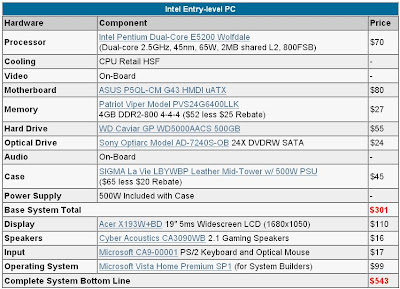







No comments:
Post a Comment